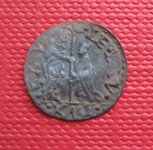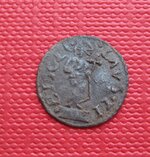robfinds
Silver Member
The best find of yesterday afternoon was this small hammered silver coin. It's a soldino of the Doge Leonardo Loredan, 1501-21. These small coins were imported into England by Venetian traders. There was a shortage of official half pennies at the time. These coins were used as unofficial half pennies. They were also known as galley half pennies, from the ships in which they came. Had a few soldinos over the years, this I would say condition wise is the best. Robert.
Amazon Forum Fav 👍
Attachments
Upvote
20










